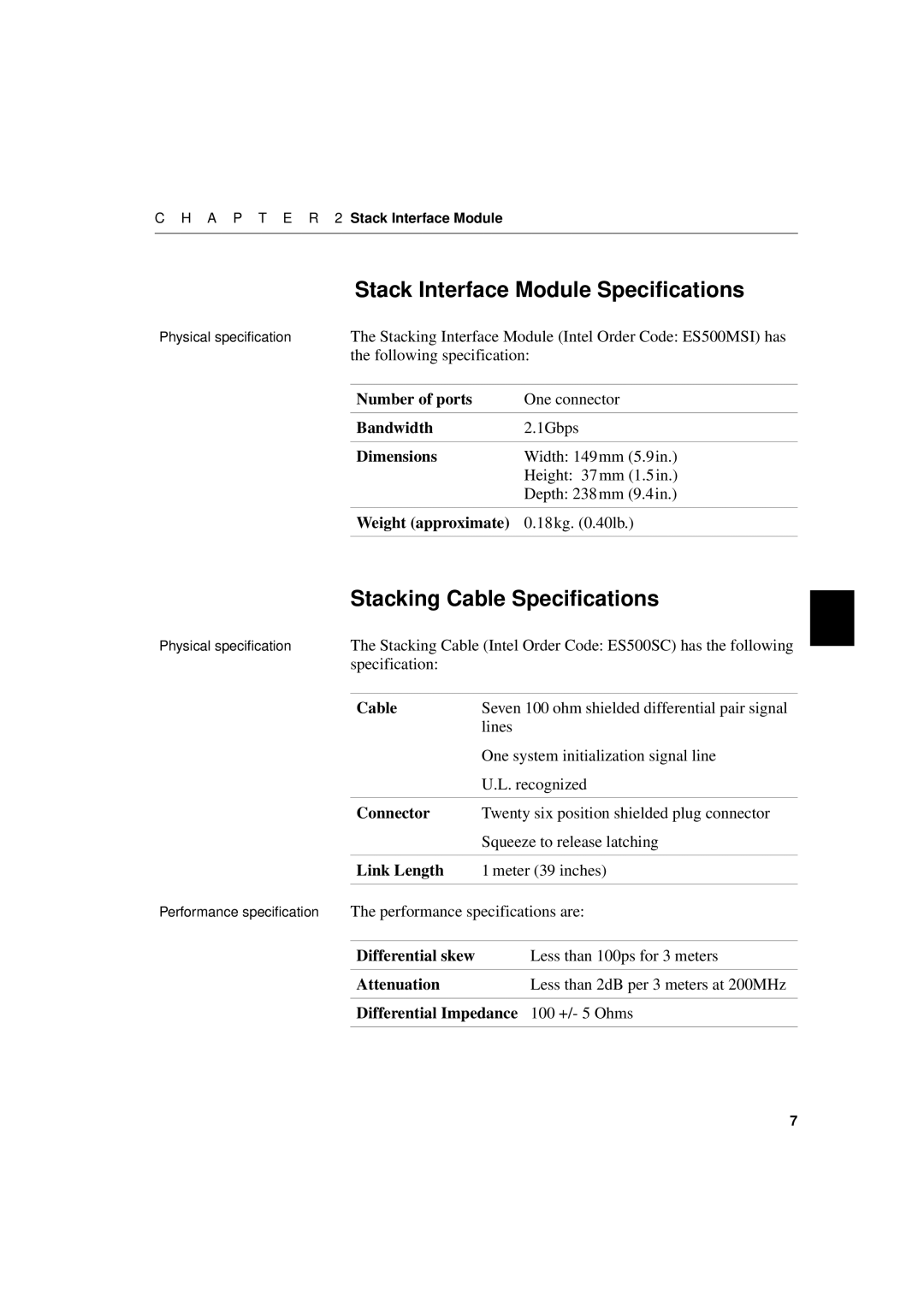500 specifications
The Intel 500 series, part of Intel's line of chipsets, has created a significant impact in the technology landscape, particularly in enhancing the performance and capabilities of computing systems. Designed primarily for desktop and mobile platforms, these chipsets cater to a diverse range of user needs, from gamers to professional creatives.One of the standout features of the Intel 500 series is its support for the latest Intel processors, including the 11th and 12th generation Core processors. With this compatibility, users benefit from improved processing power and energy efficiency. This series also introduces advanced graphics capabilities, thanks to Intel’s integrated Iris Xe Graphics, which provides enhanced performance for gaming and content creation without the need for a dedicated GPU.
The chipset is built with Intel's cutting-edge technologies, including Intel Turbo Boost Technology, which dynamically increases the processor's frequency for improved performance during demanding tasks. Additionally, the inclusion of Intel Hyper-Threading technology allows for more efficient multitasking, enabling users to run several applications simultaneously with less lag.
Another characteristic that stands out within the Intel 500 series is the support for faster memory speeds with DDR4 and DDR5 RAM. This compatibility allows users to take advantage of higher bandwidths and improved overall system responsiveness, which is crucial for high-performance tasks. The series also includes support for PCIe 4.0, offering significantly faster data transfer rates between the chipset and connected devices, including NVMe SSDs and GPUs.
Furthermore, the Intel 500 series boasts enhanced connectivity options, including Thunderbolt 4 and USB4 support. These features allow for high-speed data transfer and the capability to connect to a wider range of devices, making it easier for users to expand their system capabilities. The chipset also integrates Intel's advanced security features, like Intel Platform Trust Technology and hardware-based security measures, which protect user data and enhance system integrity.
In summary, the Intel 500 series encapsulates a blend of performance, efficiency, and connectivity, making it a compelling choice for a wide array of users. Its advanced features and support for cutting-edge technologies ensure that it remains relevant in an ever-evolving technological landscape, catering to the demands of modern computing.

